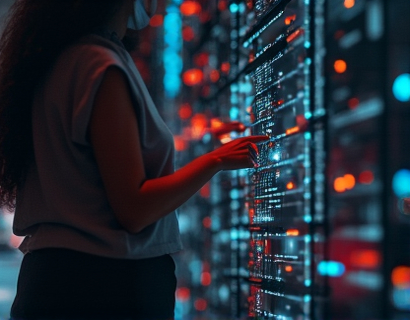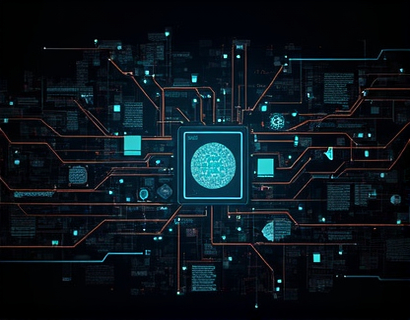Cryptocurrency Security: Tailored Elite Defense for HNWIs, Celebrities, and Entrepreneurs in the Digital Age
In the rapidly evolving digital landscape, the security of digital assets has become a paramount concern for high-net-worth individuals, celebrities, and entrepreneurs, particularly those involved in the cryptocurrency sector. The allure of cryptocurrencies like Bitcoin, Ethereum, and others has attracted significant investment and interest, but it has also drawn the attention of cybercriminals. Traditional security measures often fall short against the sophisticated threats posed in the digital realm. This article delves into the critical need for tailored cybersecurity strategies that provide elite defense for those who hold substantial digital assets.
Understanding the Threat Landscape
The cryptocurrency market operates 24/7, making it a prime target for cyberattacks. Hackers leverage advanced techniques such as phishing, malware, ransomware, and especially DDoS attacks to compromise security. For HNWIs, celebrities, and entrepreneurs, the stakes are even higher due to the significant value of their digital assets. A single breach can result in substantial financial loss and irreparable damage to reputation. Understanding the threat landscape is the first step in fortifying defenses.
Customized Security Strategies for High-Risk Individuals
One-size-fits-all security solutions are inadequate for the unique needs of high-risk individuals. A tailored approach ensures that defenses are robust, adaptable, and specifically designed to counter the most sophisticated threats. For HNWIs, celebrities, and cryptocurrency professionals, security strategies must encompass multiple layers of protection, from initial asset storage to transaction execution and beyond.
Asset Storage Solutions
The first line of defense is secure asset storage. Hardware wallets, such as Trezor and Ledger, offer a high level of security by keeping private keys offline. These devices are designed to resist physical and digital attacks. For added security, multi-signature wallets can be employed, requiring multiple keys to authorize a transaction, thus reducing the risk of unauthorized access.
Cold storage solutions, where assets are kept offline, are essential for long-term storage. Trusted third-party services that specialize in cold storage can provide an additional layer of security, especially for those managing large portfolios. Regular audits and monitoring of these storage solutions are crucial to ensure their integrity and security.
Network and Device Security
Protecting the devices and networks used to access cryptocurrency wallets is equally important. Advanced antivirus and anti-malware solutions must be implemented to detect and neutralize threats. Firewalls and intrusion detection systems add another layer of protection by monitoring network traffic for suspicious activity.
Using secure, unique, and complex passwords for all accounts is fundamental. Password managers can help generate and store these passwords securely. Two-factor authentication (2FA) should be enabled wherever possible to add an extra layer of security. Regularly updating software and operating systems is also vital to patch known vulnerabilities.
Transaction Security
Secure transaction practices are crucial to prevent theft and fraud. Transactions should be conducted over secure and verified networks. Public Wi-Fi networks are particularly risky and should be avoided for sensitive operations. Using VPNs can help encrypt internet traffic and mask the user's IP address, adding a layer of anonymity.
Monitoring transaction activity and setting up alerts for unusual activity can help detect potential breaches early. Implementing transaction limits and requiring secondary verification for large transactions can further mitigate risks. Educating users about common phishing tactics and social engineering techniques is also essential.
Operational Security Measures
Operational security extends beyond technical measures and involves a comprehensive approach to safeguarding information and assets. This includes physical security, employee training, and incident response planning.
Physical Security
For those who store hardware wallets or other physical devices containing private keys, physical security is paramount. Secure storage solutions such as safe rooms or vaults can protect against theft and unauthorized access. Access controls, surveillance systems, and regular security audits ensure that physical assets remain safe.
Employees and contractors handling sensitive information should undergo thorough background checks and sign non-disclosure agreements. Physical access to secure areas should be restricted and monitored.
Employee Training and Awareness
Human error is a significant vulnerability in any security strategy. Regular training sessions for employees and partners involved in cryptocurrency operations are essential. Training should cover topics such as recognizing phishing attempts, safe browsing practices, and the importance of maintaining confidentiality.
Simulated phishing exercises can help identify and address knowledge gaps. Creating a culture of security awareness ensures that everyone understands their role in protecting digital assets.
Incident Response Planning
Despite the best precautions, security breaches can still occur. Having a robust incident response plan in place is crucial for minimizing damage and recovering quickly. The plan should outline clear steps to be taken in the event of a breach, including containment, investigation, and communication with stakeholders.
Regularly testing and updating the incident response plan ensures its effectiveness. Engaging with cybersecurity experts to conduct penetration testing and vulnerability assessments can help identify and address potential weaknesses before they are exploited.
Leveraging Expertise and Technology
Given the complexity of cybersecurity threats, leveraging expert knowledge and advanced technologies is essential. Cybersecurity firms specializing in high-risk sectors can provide tailored solutions and ongoing support to address evolving threats.
Advanced Threat Detection
Implementing advanced threat detection systems can help identify and mitigate threats in real-time. Machine learning and artificial intelligence (AI) technologies can analyze vast amounts of data to detect anomalies and potential attacks that traditional methods might miss. These systems can provide early warnings and automate responses to threats.
Blockchain Security Enhancements
While blockchain technology itself is secure, additional measures can enhance the security of cryptocurrency transactions. Using secure and reputable exchanges with strong security protocols is crucial. Implementing cold storage for a significant portion of assets and using secure transaction protocols can further reduce risks.
Exploring the use of zero-knowledge proofs and other privacy-enhancing technologies can also protect the anonymity and security of transactions, especially for those who value privacy.
Continuous Monitoring and Adaptation
Cybersecurity is not a set-it-and-forget-it process. The threat landscape is constantly evolving, and defenses must adapt accordingly. Continuous monitoring of systems and networks is essential to detect and respond to threats promptly.
Regular security audits and assessments help identify new vulnerabilities and ensure that security measures remain effective. Staying informed about the latest cybersecurity trends and threats is crucial for maintaining a proactive defense strategy.
Building a Security Mindset
Ultimately, a strong security posture requires a cultural shift towards a security-first mindset. All stakeholders, from executives to frontline employees, must understand the importance of cybersecurity and their role in maintaining it. Encouraging a culture of vigilance and responsibility can significantly enhance overall security.
Educational resources, such as webinars, workshops, and online courses, can help keep everyone informed and up-to-date on best practices. Fostering open communication about security concerns and incidents can also build trust and improve resilience.
In conclusion, protecting cryptocurrency assets requires a multifaceted approach that combines advanced technology, expert knowledge, and a culture of security awareness. By implementing tailored elite defense strategies, HNWIs, celebrities, and entrepreneurs can safeguard their digital assets against the sophisticated threats of the modern digital age.










































